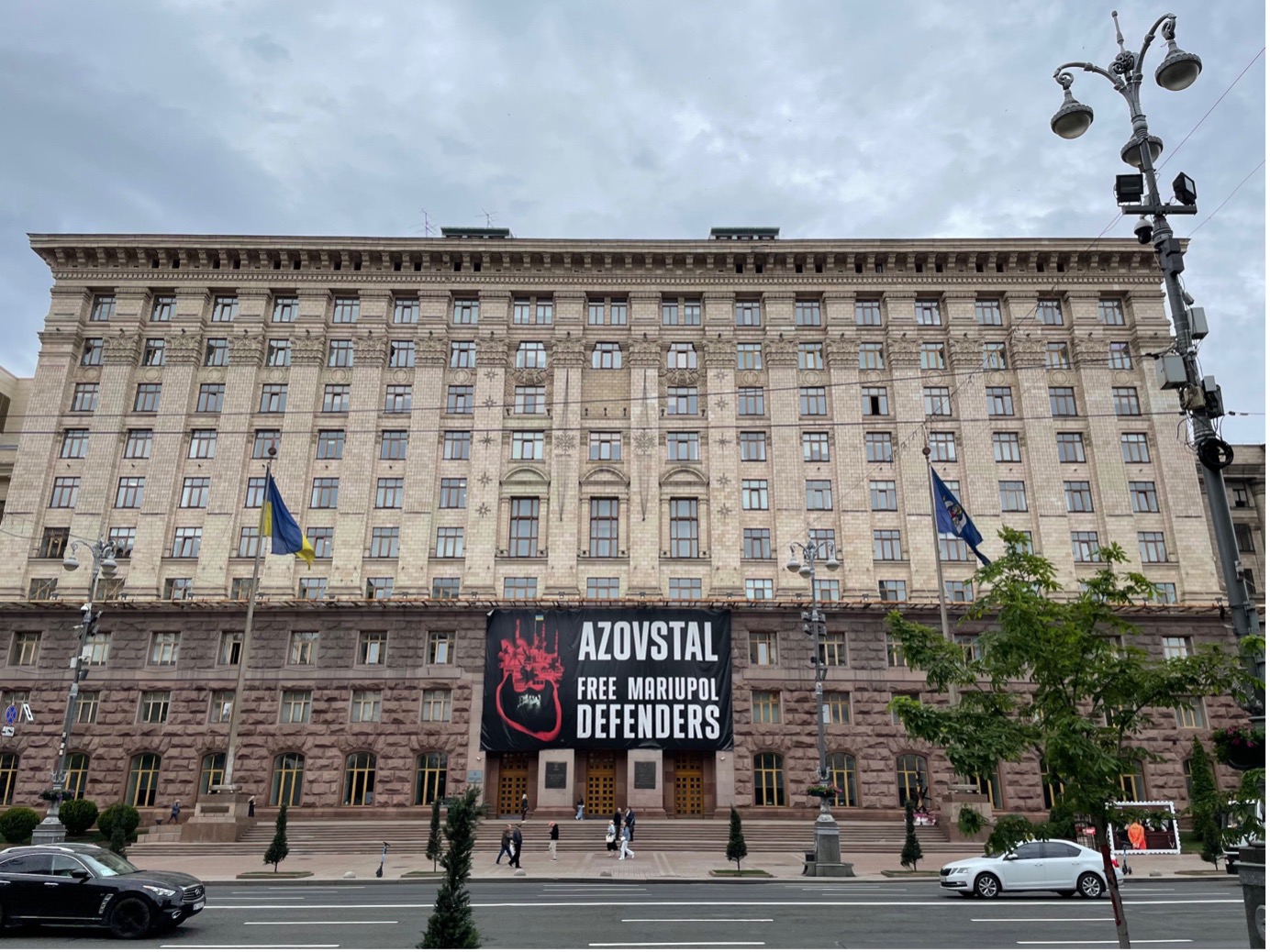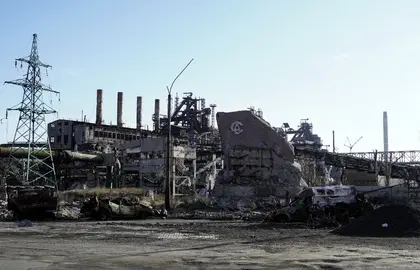One year ago this week, Ukraine's Azov Regiment surrendered at the Azovstal Iron and Steel Works after a brutal siege.
One of the largest metal mills in Europe, the Azovstal plant in the eastern Ukrainian city of Mariupol went down in history as a symbol of Ukrainian resistance to Russia's invasion.
JOIN US ON TELEGRAM
Follow our coverage of the war on the @Kyivpost_official.
The fighters inside Azovstal withstood attacks by the Russian army for weeks when the rest of the city had fallen after devastating and relentless assaults.
The Azov troops took shelter in a warren of tunnels beneath the plant, suffering appalling conditions.
They finally surrendered on May 16 as they ran out of food, ammunition and medicine, but have become heroes for Ukrainians.
Some were later released in prisoner exchanges with Russian forces. Others are still held by Moscow.
On May 20, all remaining Ukrainian troops were ordered by Kyiv to surrender to save their lives.
Those that remain in the hands of the Kremlin have not been forgotten – a huge banner on Kyiv’s Khreschatyk Street reads: “AZOVSTAL: FREE MARIUPOL DEFENDERS.”

The banner on Khreschatyk Street pictured May 16, 2022. PHOTO: Kyiv Post
One Azov Regiment soldier who was released in August last year, spoke of his time in captivity, saying: “There was no contact with relatives, no access to the phone.”
Medical care was “very low-grade” and medicines were in short supply.

Trump Makes 90 Day Foreign Aid Freeze – Ukraine Military Support Supposedly Untouched
“After being seriously wounded, I did not start receiving antibiotics until the fifth day,” he said.
He and three other soldiers from his ward were given just enough food “so that the heart would not stop.”
“And we were told every day that no one needed us, that they would not exchange us for anyone, and that everyone had abandoned us.”
Prisoner swaps between Ukraine and Russia are ongoing – on May 6, 45 Azov battalion fighters captured during the battle for Mariupol were exchanged for three Russian pilots.
A timeline leading up to the siege is set out below.
Pounded, encircled
On March 2, a week after Russia launched its full-scale invasion of Ukraine, Moscow's artillery begins pounding Mariupol, a predominantly Russian-speaking city. It comprises 441,000 inhabitants and sits some 55 kilometers (35 miles) from the Russian border and 85 kilometers from the pro-Russia separatist stronghold of Donetsk, reports AFP.
The mayor accuses Russian forces and pro-Russian fighters of seeking to “impose a blockade” by cutting off food supplies and vital infrastructure, including water, electricity and heating.
Maternity ward bombed
On March 9, Russia targets a building housing a maternity ward and pediatric hospital in Mariupol, killing three, including a young girl. Ukraine and the EU condemn the action as a "war crime.”
Russia claims the building is sheltering Ukrainian nationalists.
First evacuations
Mid-March sees the start of the evacuation of thousands of civilians from the city through a humanitarian corridor.
Earlier evacuation attempts had collapsed with both sides accusing the other of failing to halt fire.
Theater destroyed
On March 16, Russian airstrikes raze a theatre sheltering around 1,000 people, mostly women and children. It takes days to reach survivors trapped in an underground shelter.
Ukrainian authorities estimate some 300 people to have been killed. Moscow denies the attack, blaming Ukraine's Azov battalion, based in the city.
'Freezing hellscape'
On March 21, Kyiv rejects a first Russian ultimatum to Ukrainian forces in the city to surrender.
Civilians who manage to escape in their own vehicles describe a “freezing hellscape riddled with dead bodies and destroyed buildings,” Human Rights Watch says.
Ceasefire, more evacuations
On March 30, Moscow announces a ceasefire to allow the evacuation of civilians from Mariupol to the Ukrainian-controlled city of Zaporizhzhia.
The Ukrainian government sends 45 buses to bring people to safety. On April 4, Mariupol mayor Vadym Boychenko says the city has been “90 percent” destroyed.
Claims of hiding evidence
On April 6, President Volodymyr Zelensky says Russia is blocking humanitarian access to Mariupol because it wants to hide evidence of “thousands” of people killed there. On April 7, the new “mayor” of Mariupol, Konstantin Ivashchenko, installed by pro-Russian forces, says that around 5,000 civilians have died.
'Last battle'
On April 11, marines in Mariupol say they are preparing for a “last battle.” Zelensky puts the death toll in Mariupol at “tens of thousands.” The U.S. says it has “credible information” that Russia may use “chemical agents” in its offensive.
Reports of mass surrender
On April 13, Russia's defense ministry says that 1,026 soldiers from the 36th Marine Brigade have “surrendered” in Mariupol and broadcasts a video appearing to show troops giving themselves up.
Ukraine's army insists the fight continues. Over the following week, Russia issues a string of ultimatums to troops holed up at the Azovstal steelworks to give themselves up, but they refuse.
'Last days...hours'
On April 20, a marine commander at the steelworks, where around 1,000 civilians are also sheltering according to the Ukrainian government, says his troops are “maybe facing our last days, if not hours.”
Four busloads of women, children and the elderly are evacuated from the city.
Mariupol 'liberated'
On April 21, Putin declares the “liberation” of Mariupol to be a “success.”
He orders the Russian military to refrain from storming the Azovstal plant, telling them to besiege it instead, “so that not even a fly can escape.”
You can also highlight the text and press Ctrl + Enter










